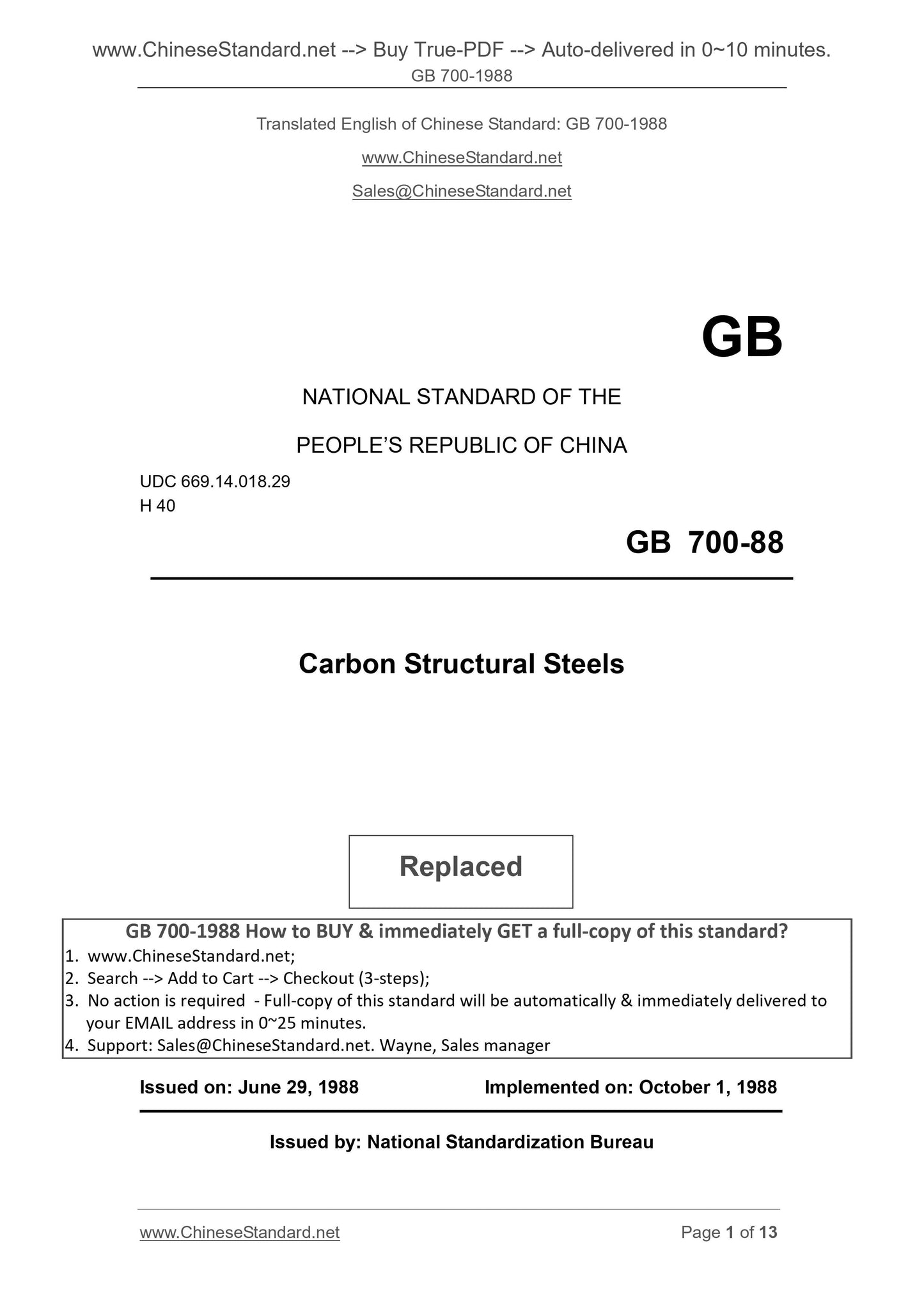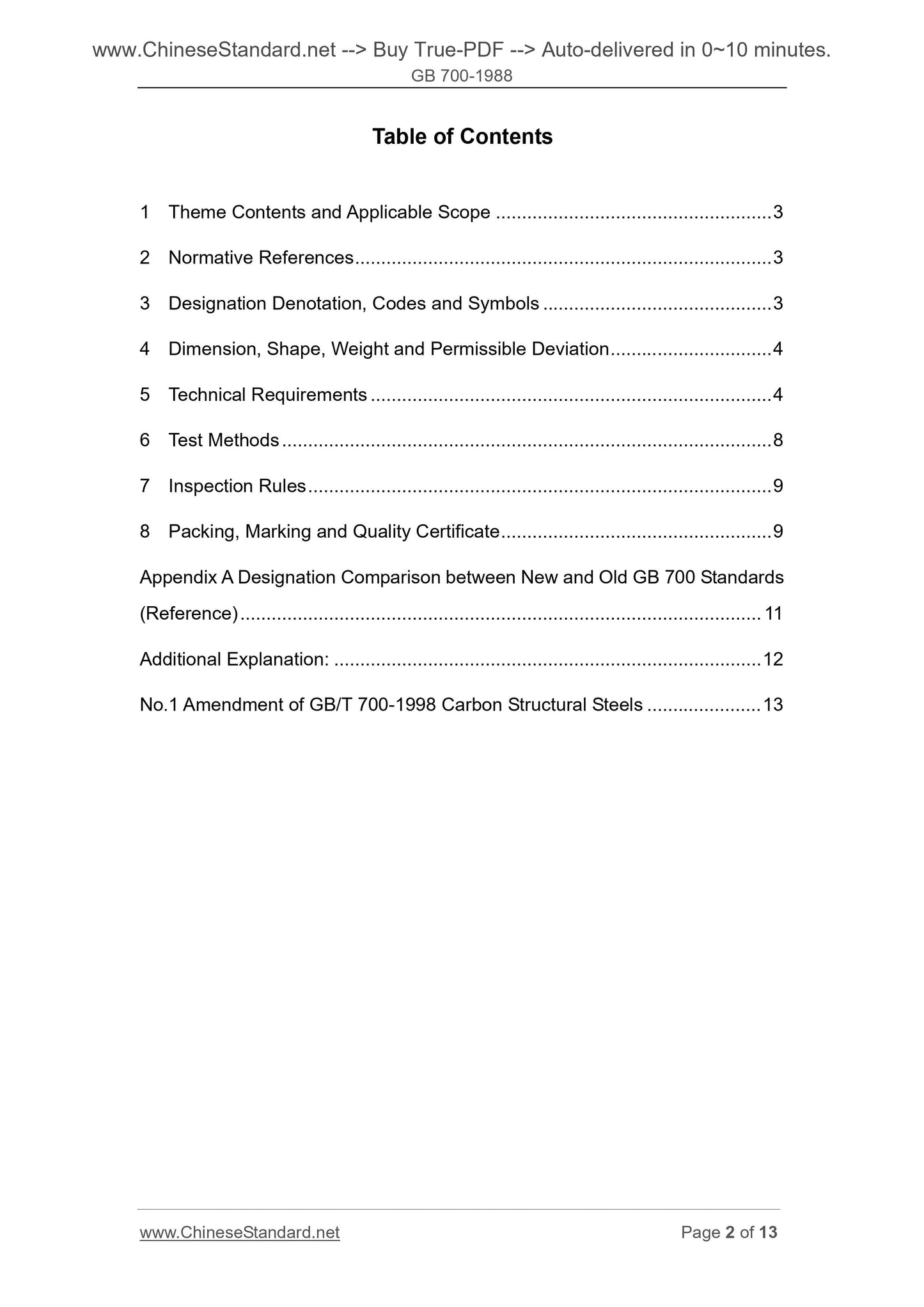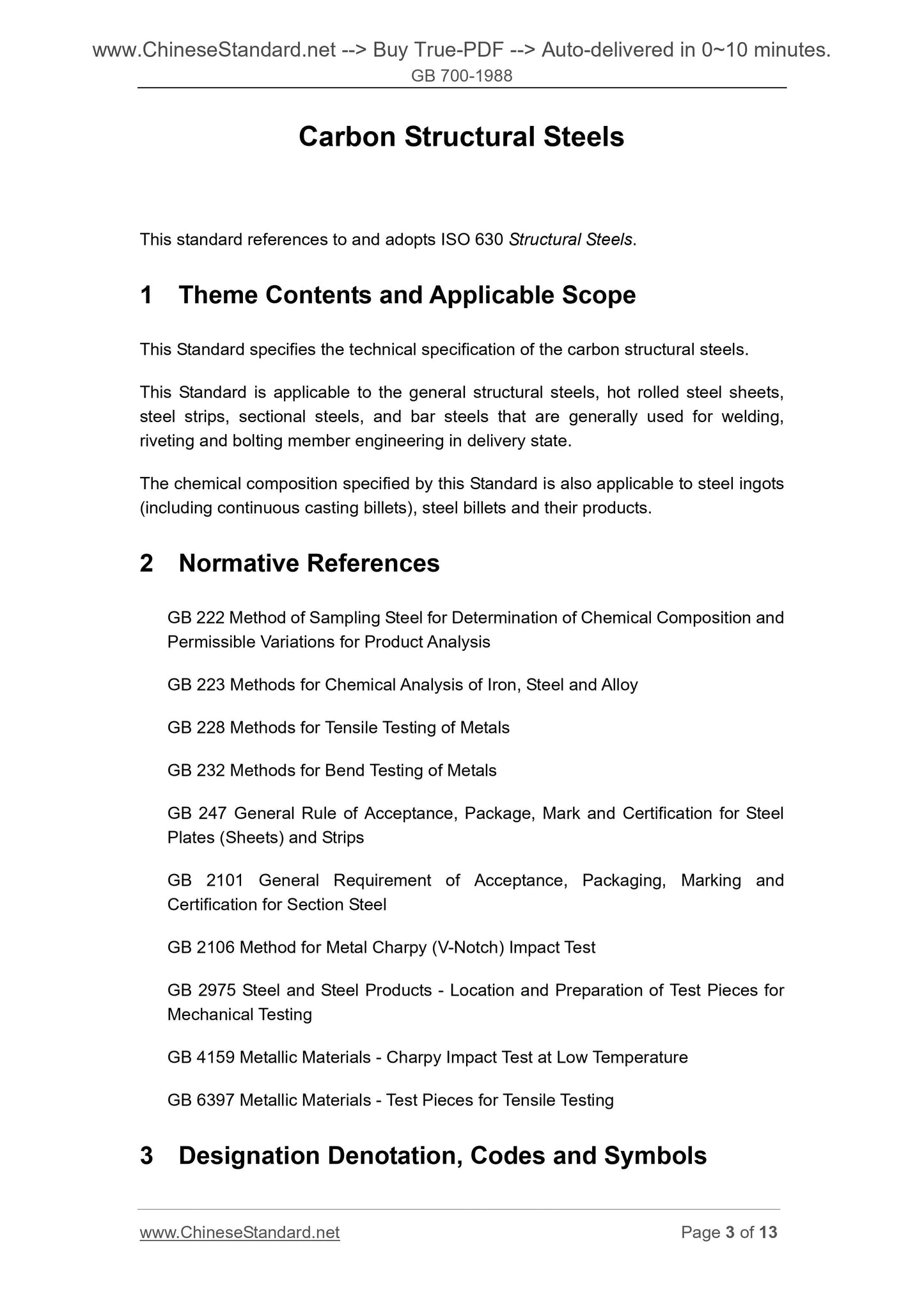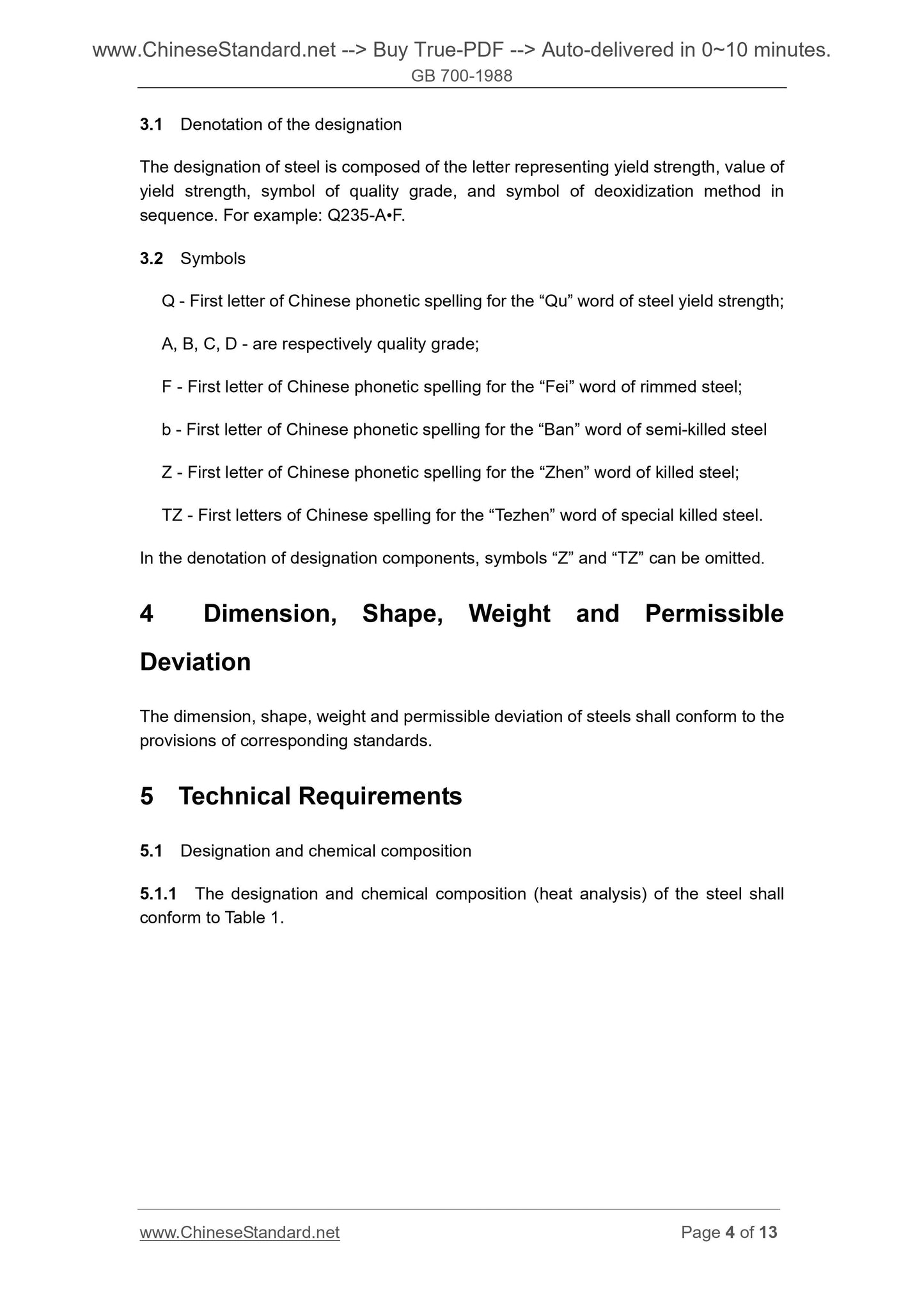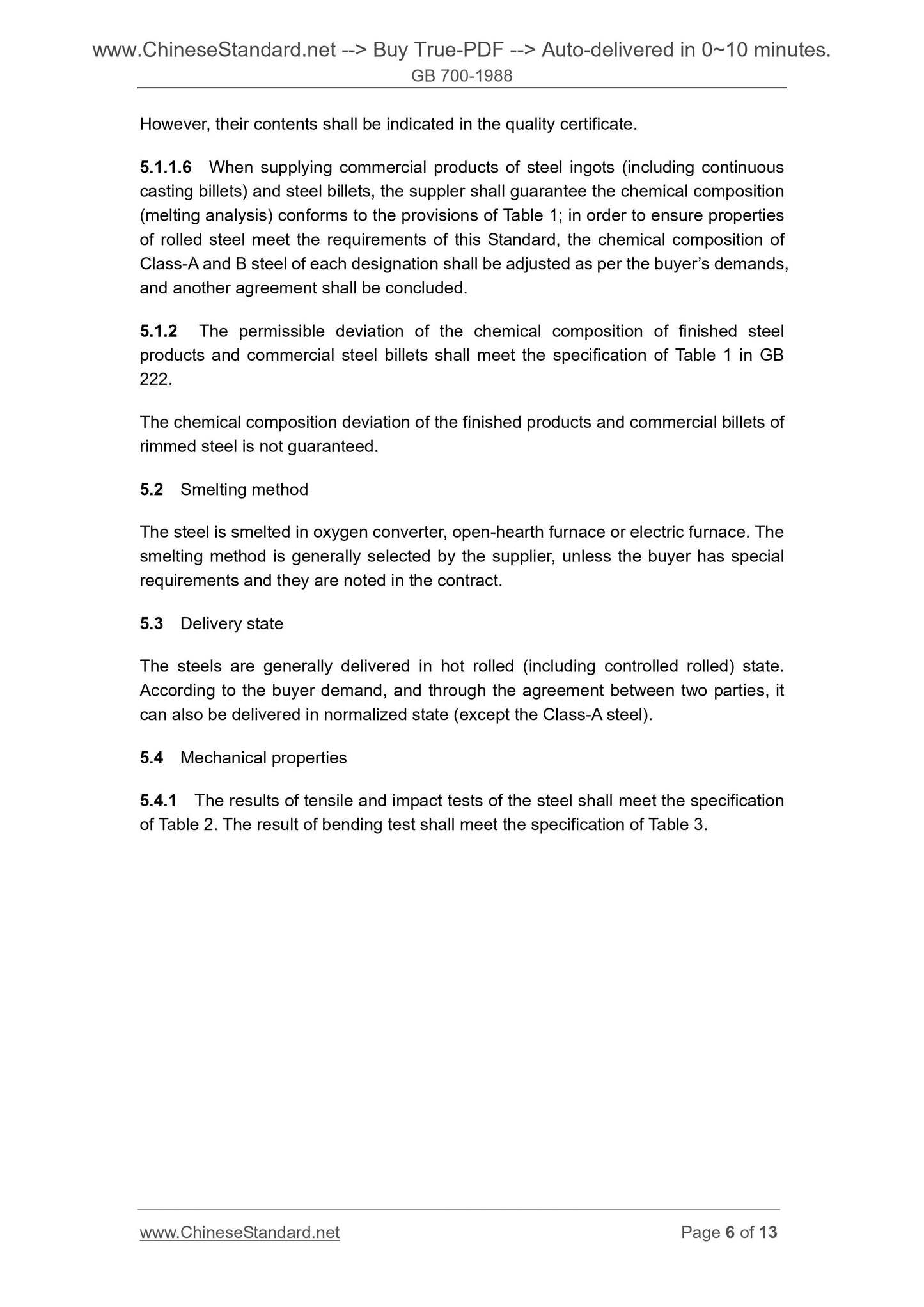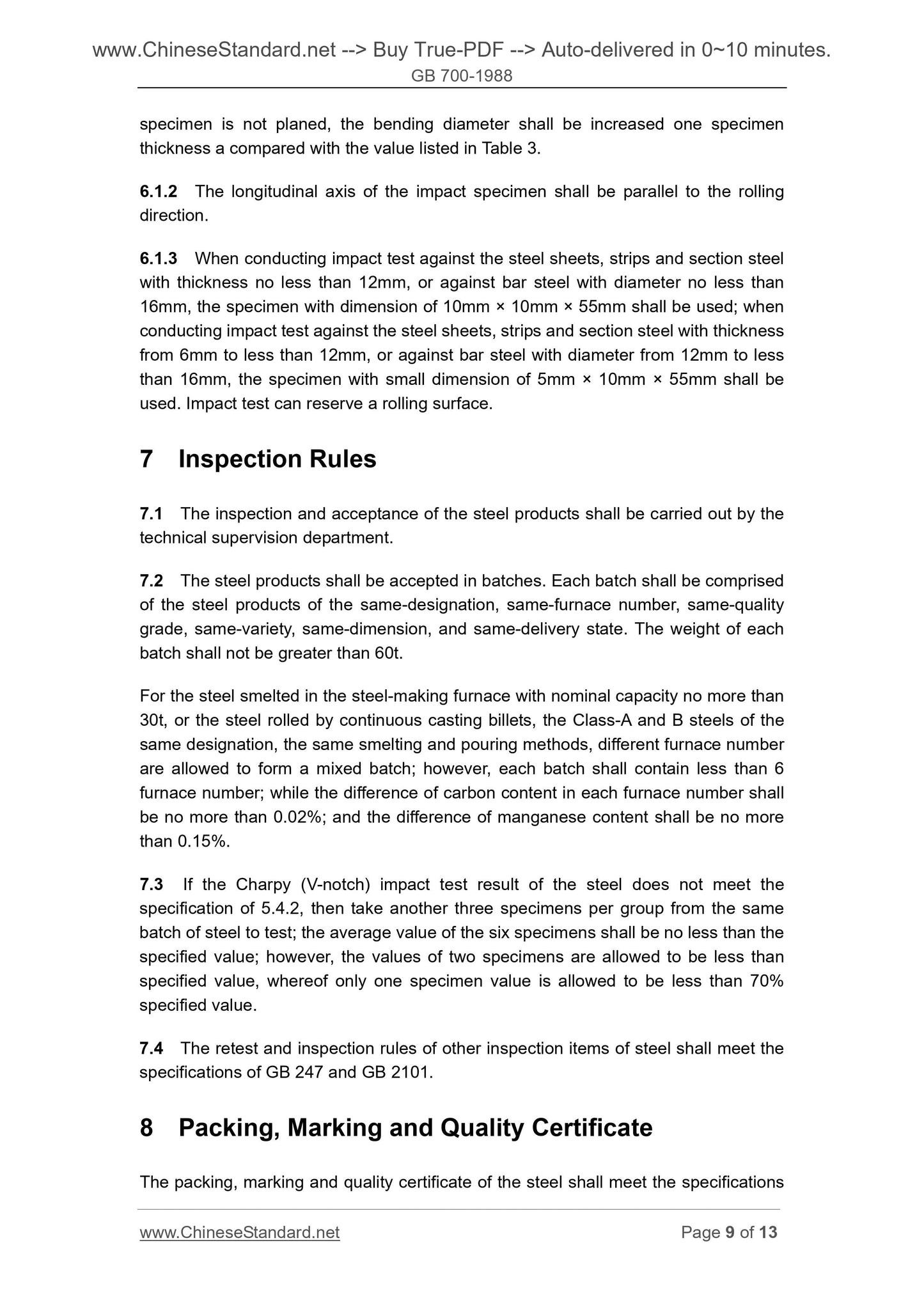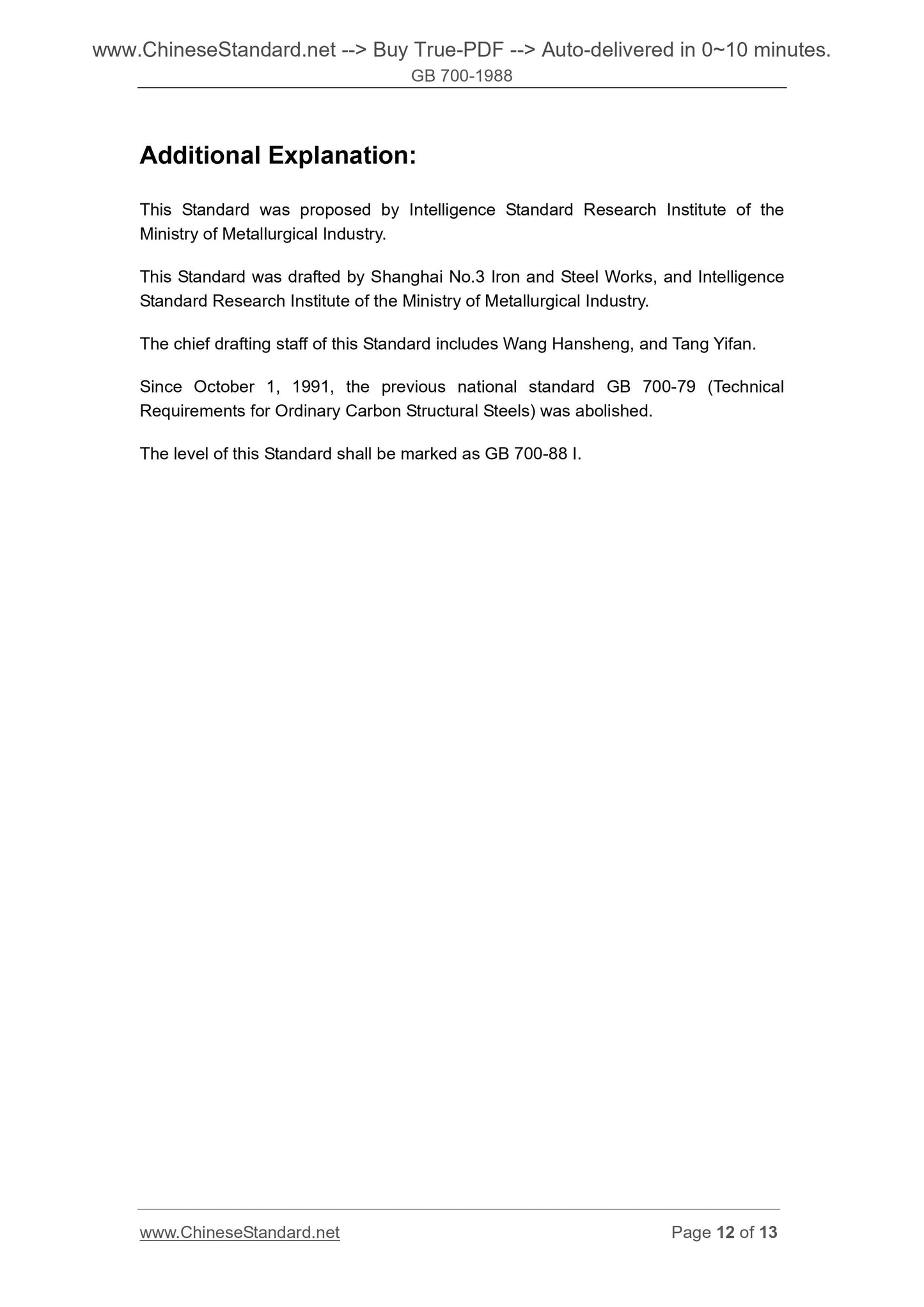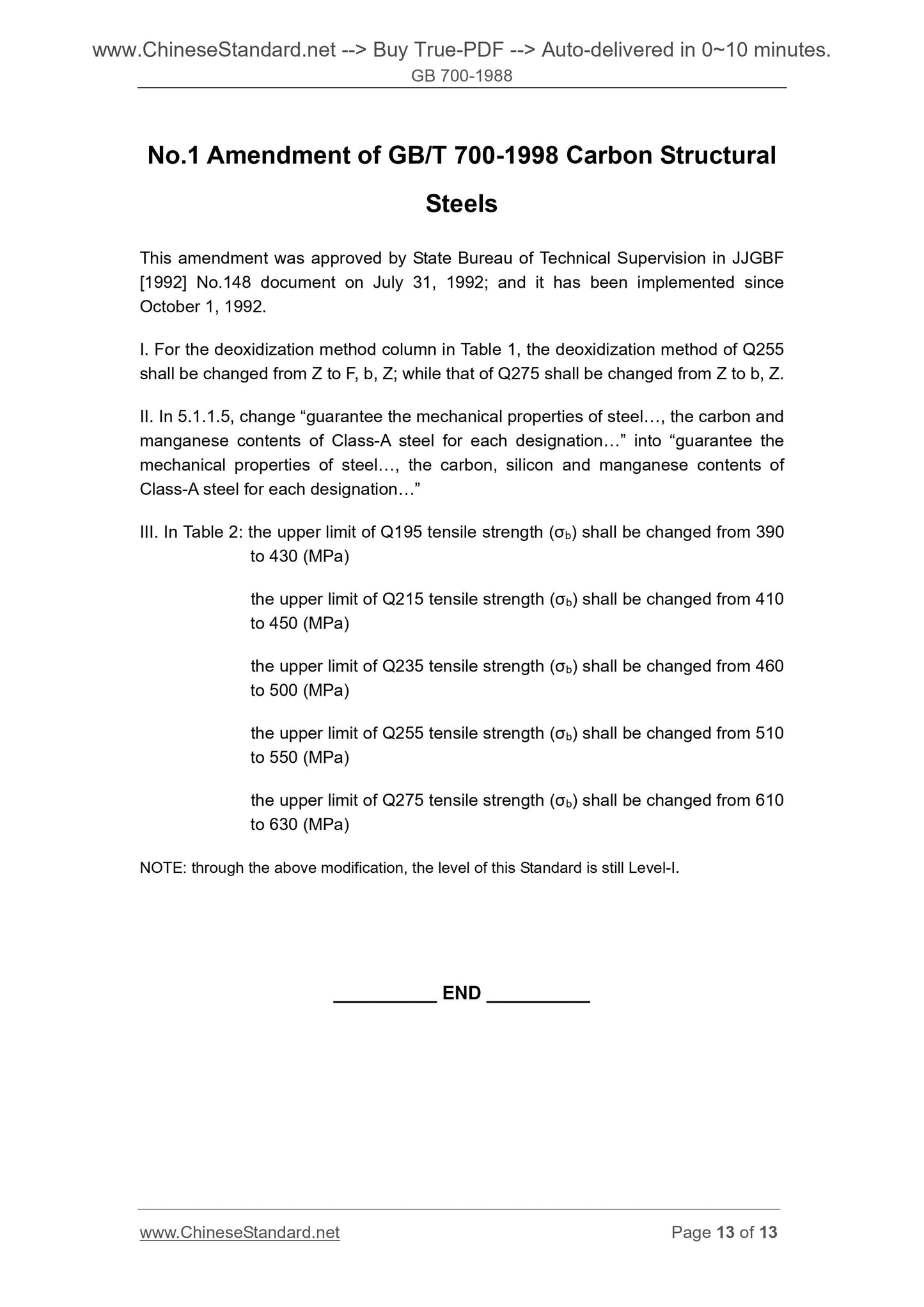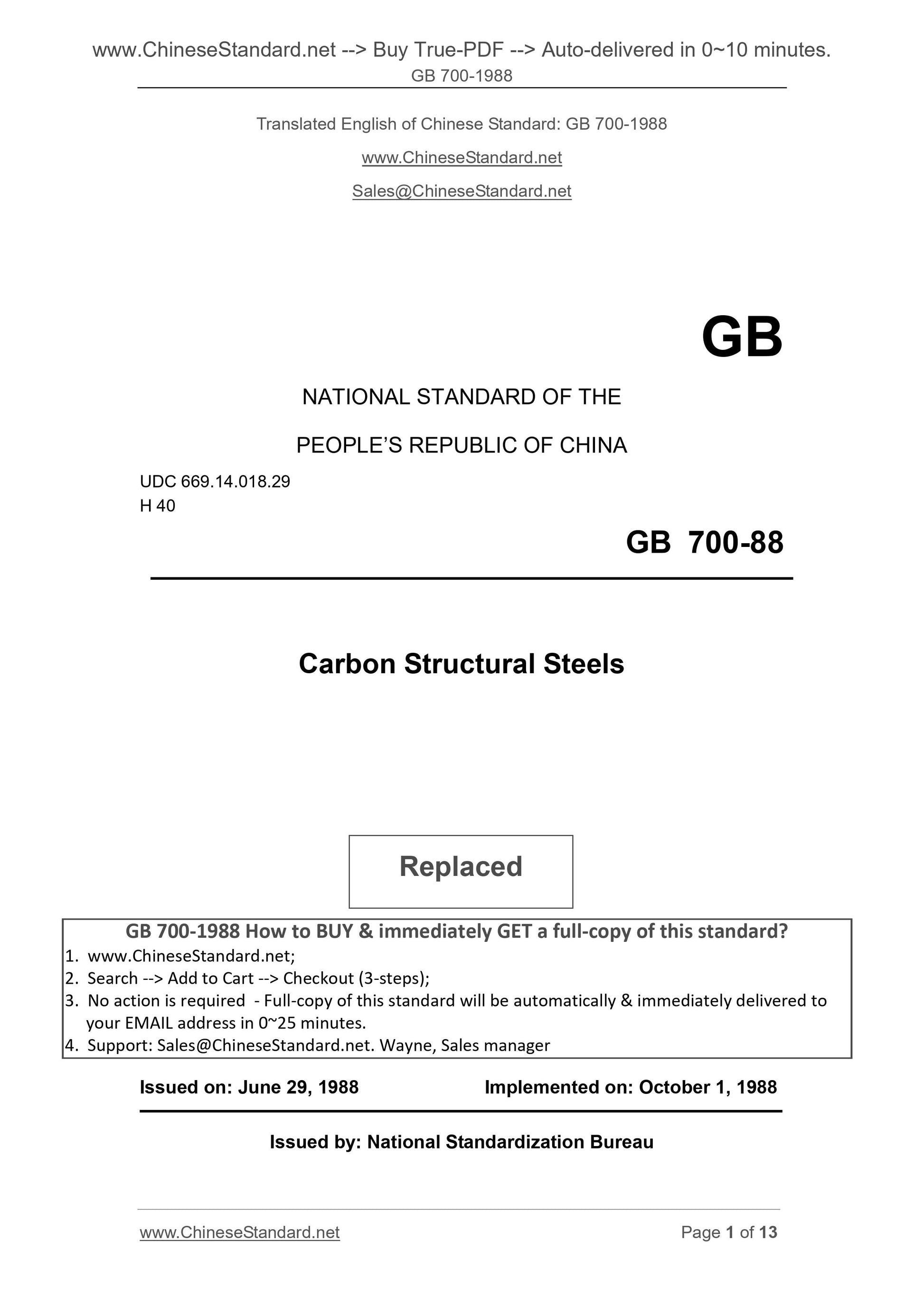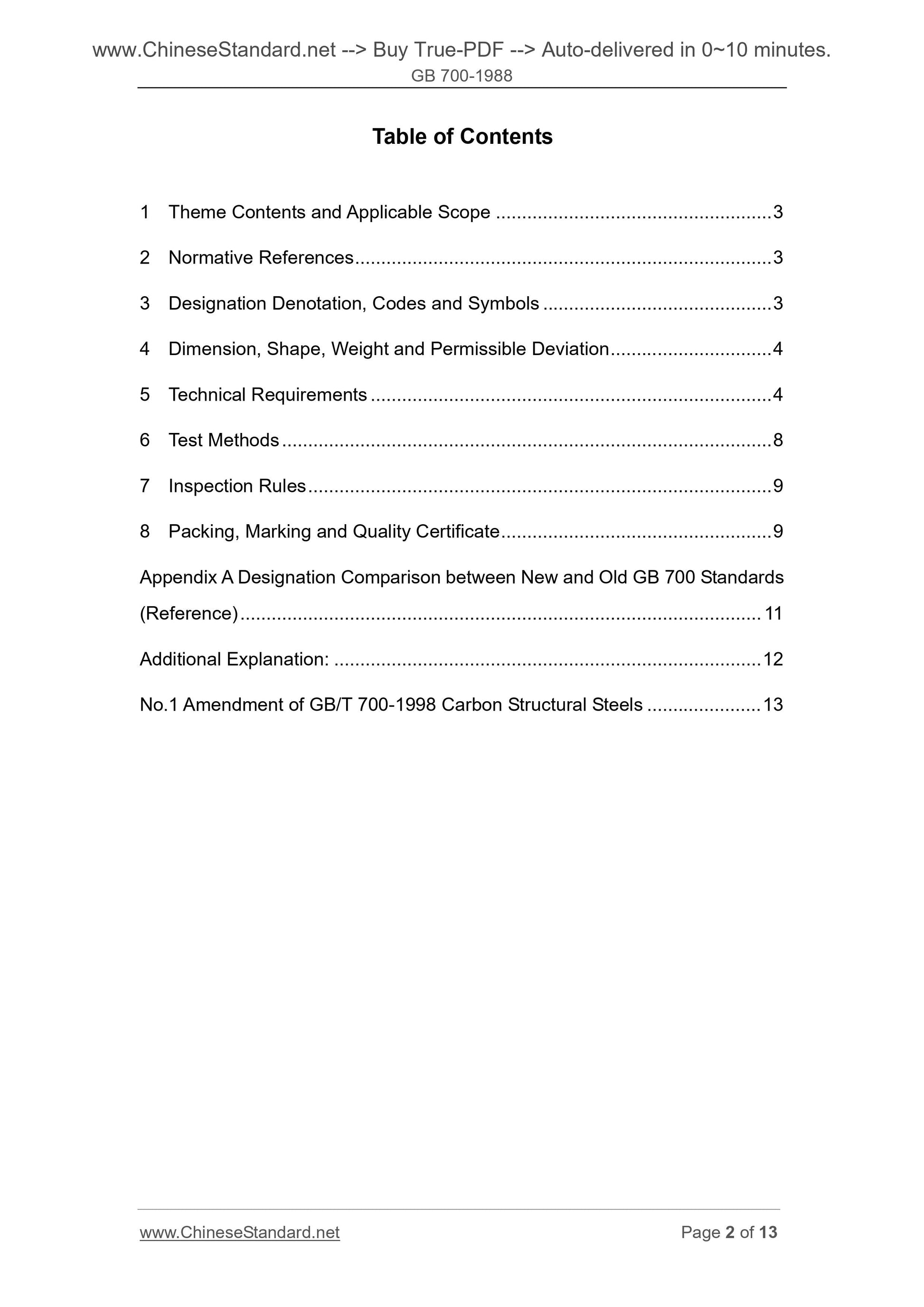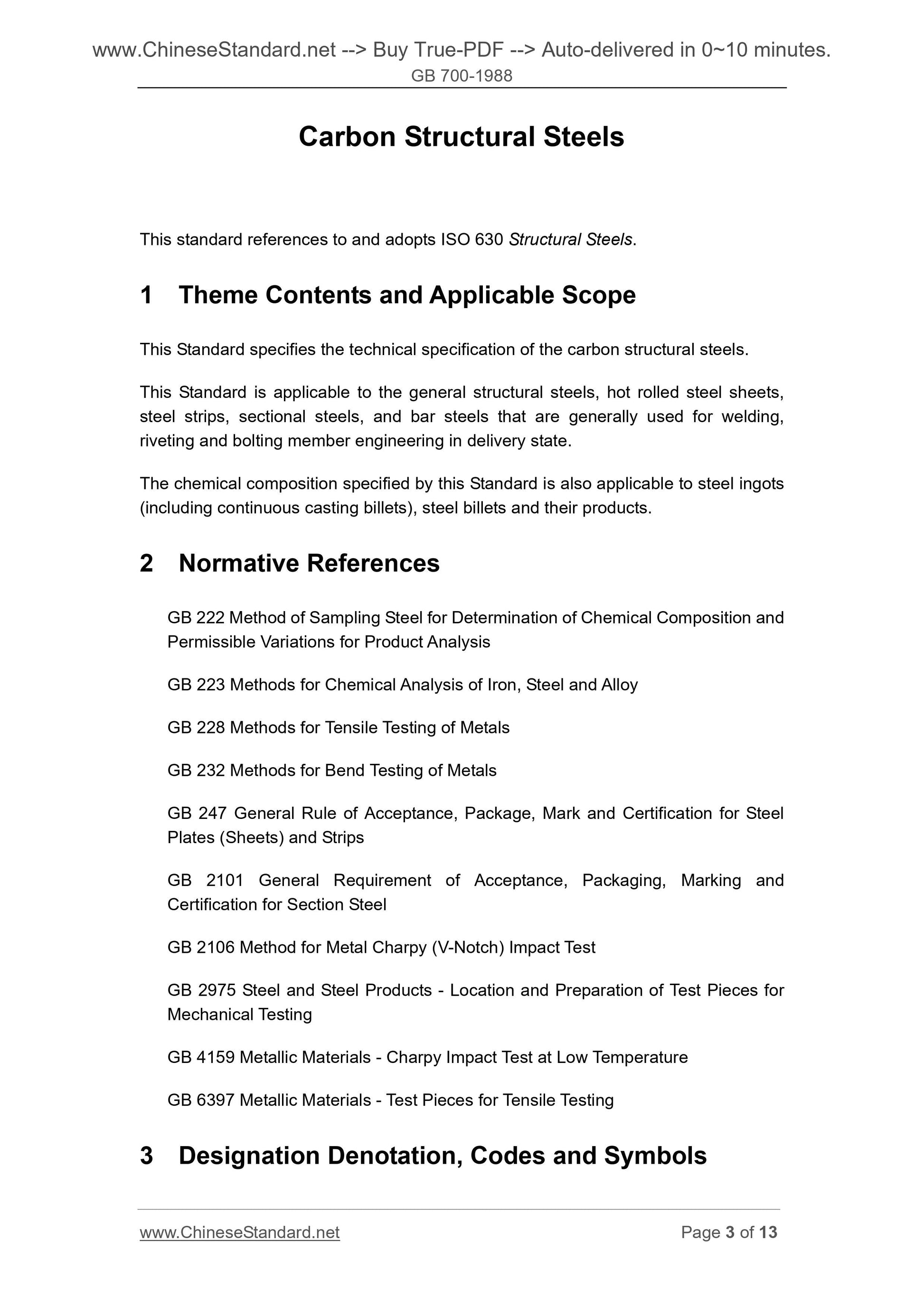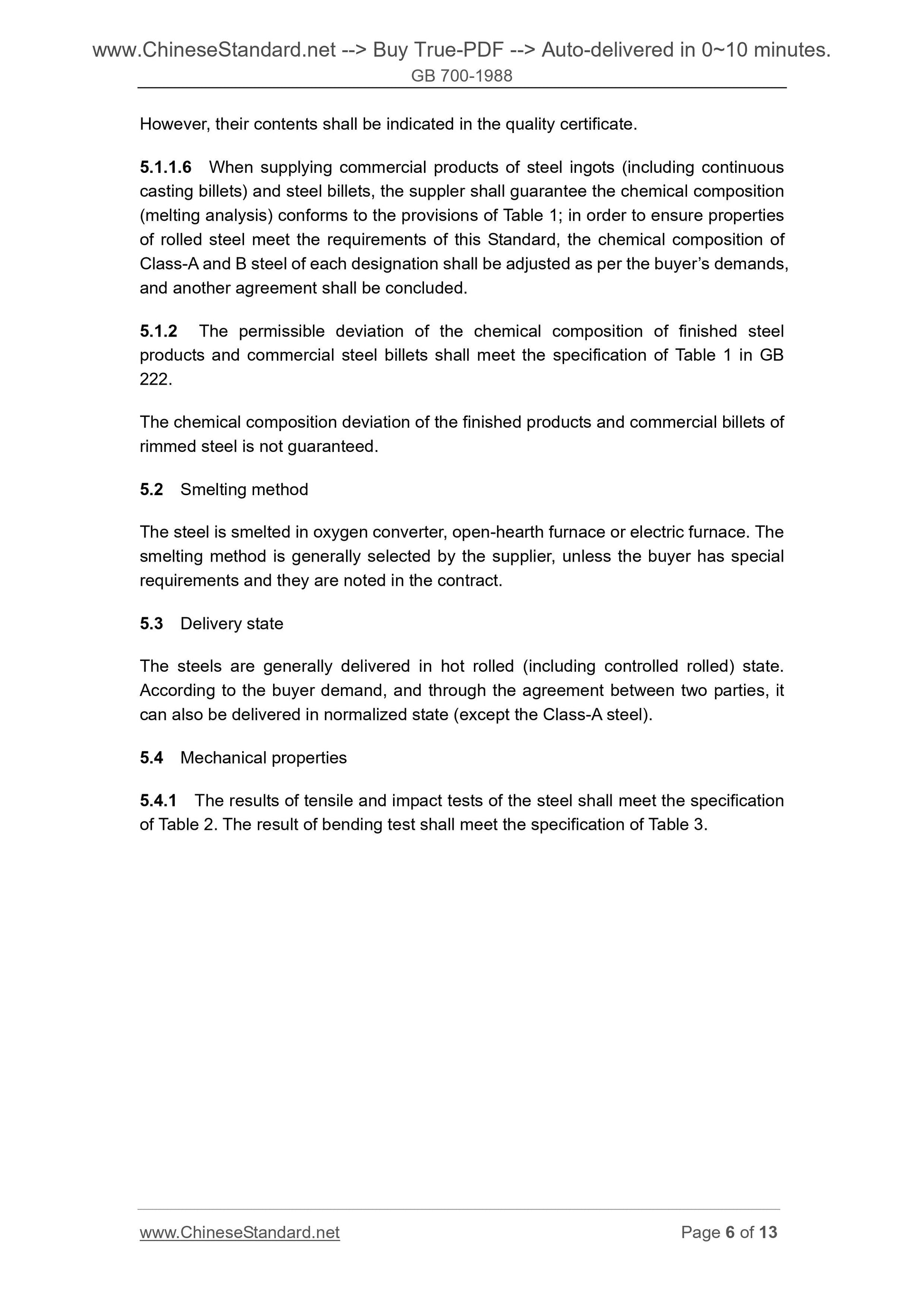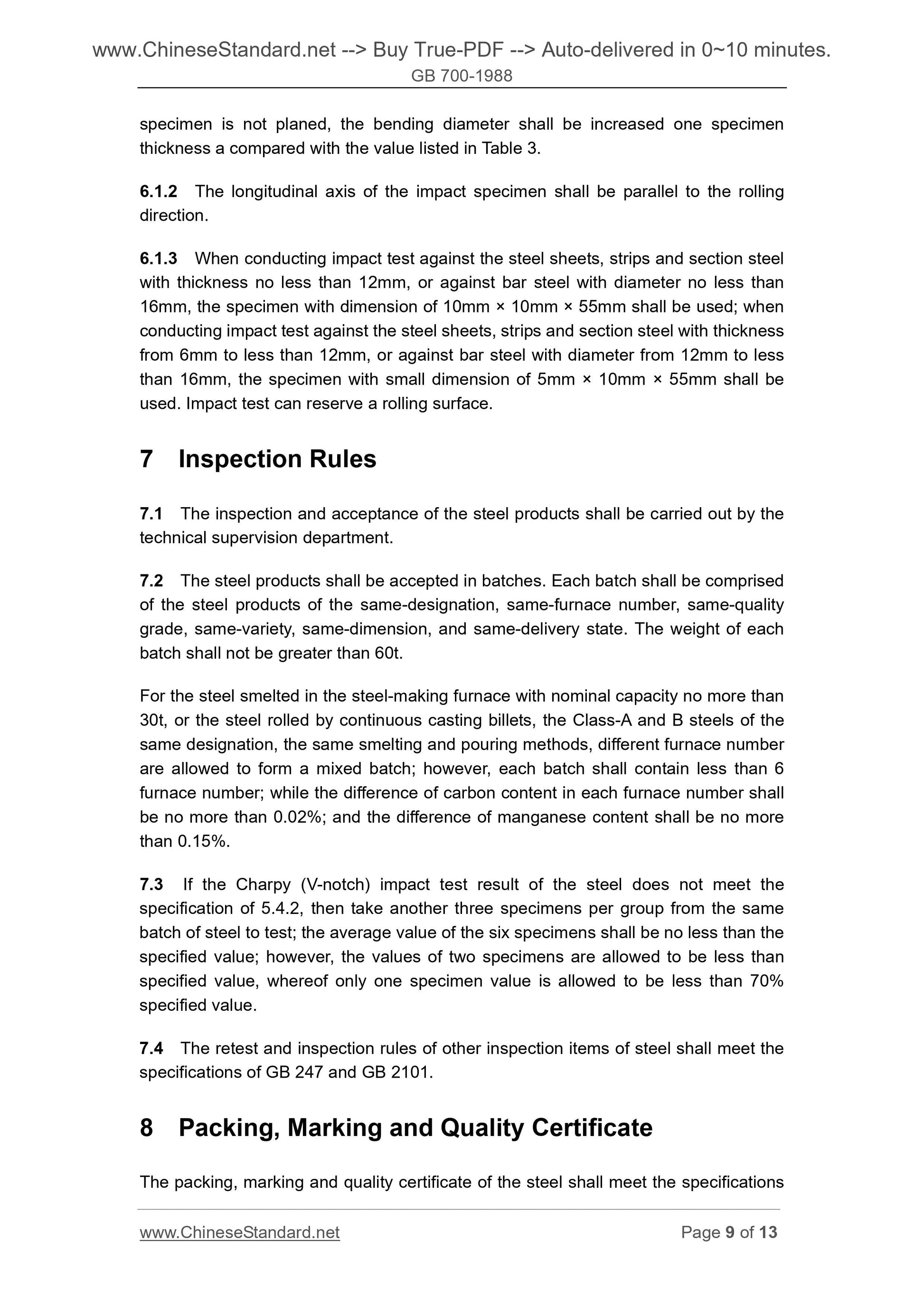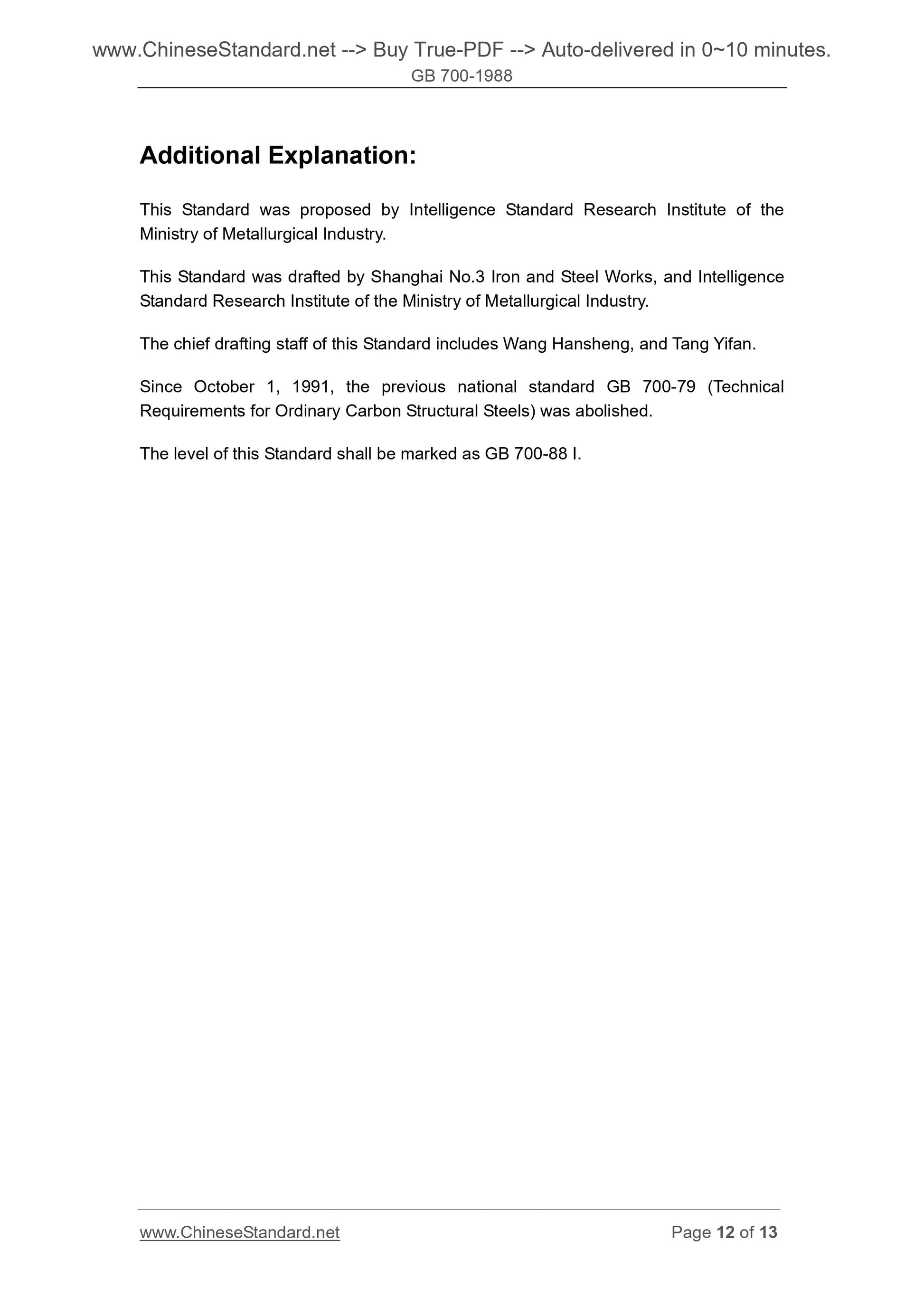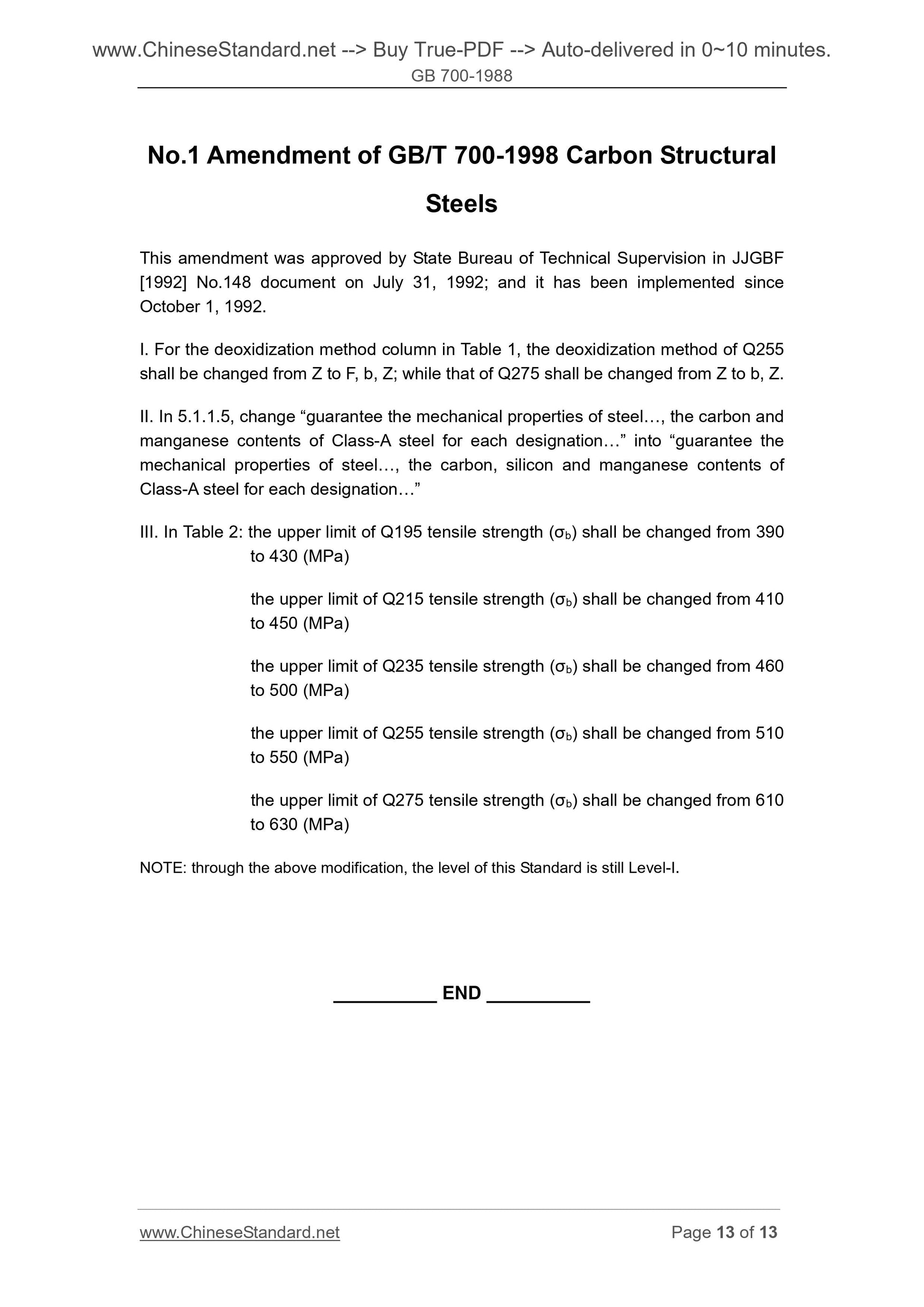1
/
of
8
PayPal, credit cards. Download editable-PDF and invoice in 1 second!
GB/T 700-1988 English PDF (GB/T700-1988)
GB/T 700-1988 English PDF (GB/T700-1988)
Regular price
$70.00
Regular price
Sale price
$70.00
Unit price
/
per
Shipping calculated at checkout.
Couldn't load pickup availability
GB/T 700-1988: Carbon structural steels
Delivery: 9 seconds. Download (and Email) true-PDF + Invoice.Get Quotation: Click GB/T 700-1988 (Self-service in 1-minute)
Newer / historical versions: GB/T 700-1988
Preview True-PDF
Scope
This Standard specifies the technical specification of the carbon structural steels.This Standard is applicable to the general structural steels, hot rolled steel sheets,
steel strips, sectional steels, and bar steels that are generally used for welding,
riveting and bolting member engineering in delivery state.
The chemical composition specified by this Standard is also applicable to steel ingots
(including continuous casting billets), steel billets and their products.
Basic Data
| Standard ID | GB/T 700-1988 (GB/T700-1988) |
| Description (Translated English) | Carbon structural steels |
| Sector / Industry | National Standard (Recommended) |
| Classification of Chinese Standard | H40 |
| Classification of International Standard | 77.140.20 |
| Word Count Estimation | 8,863 |
| Date of Issue | 6/25/1988 |
| Date of Implementation | 1/1/1989 |
| Older Standard (superseded by this standard) | GB 700-1979 |
| Adopted Standard | ISO 630, NEQ; DIN 630-1987, NEQ |
| Regulation (derived from) | Announcement of Newly Approved National Standards No. 11, 2006 (No. 98 overall) |
| Issuing agency(ies) | National Bureau of Standards |
Share
